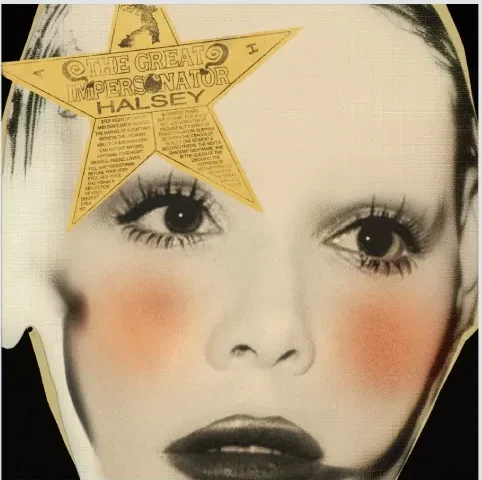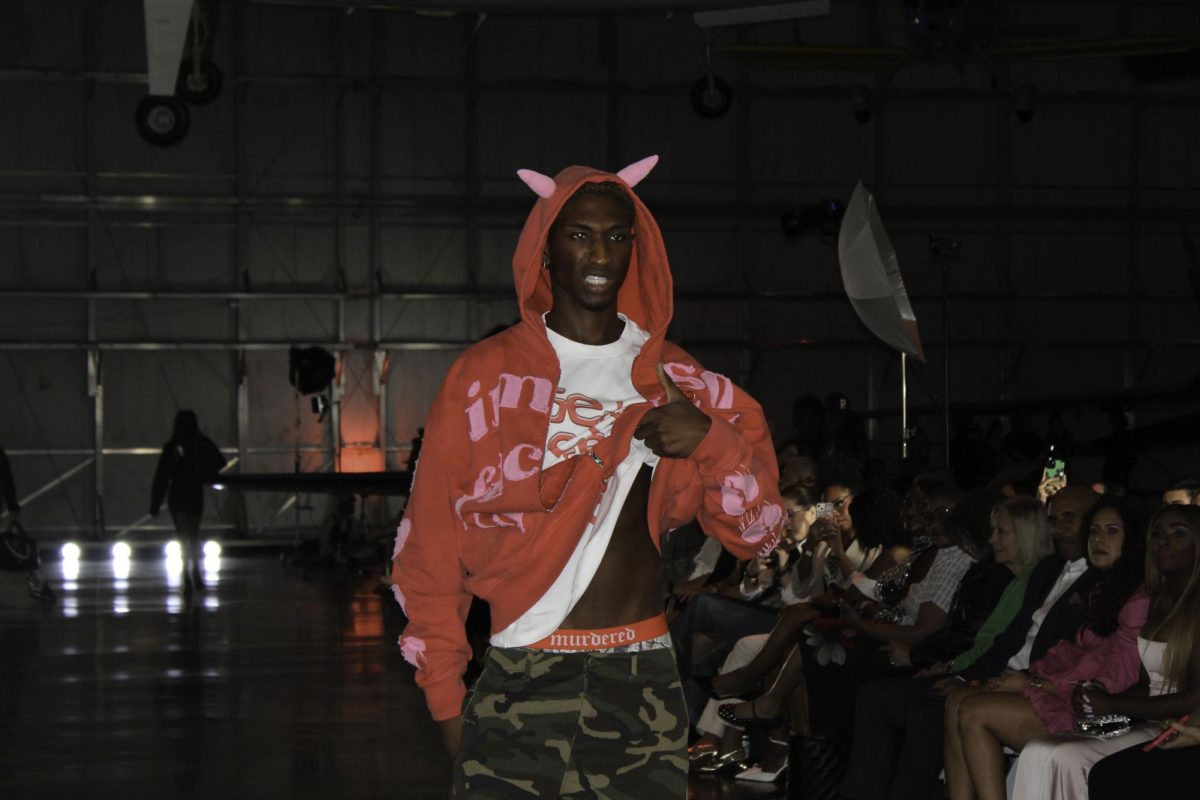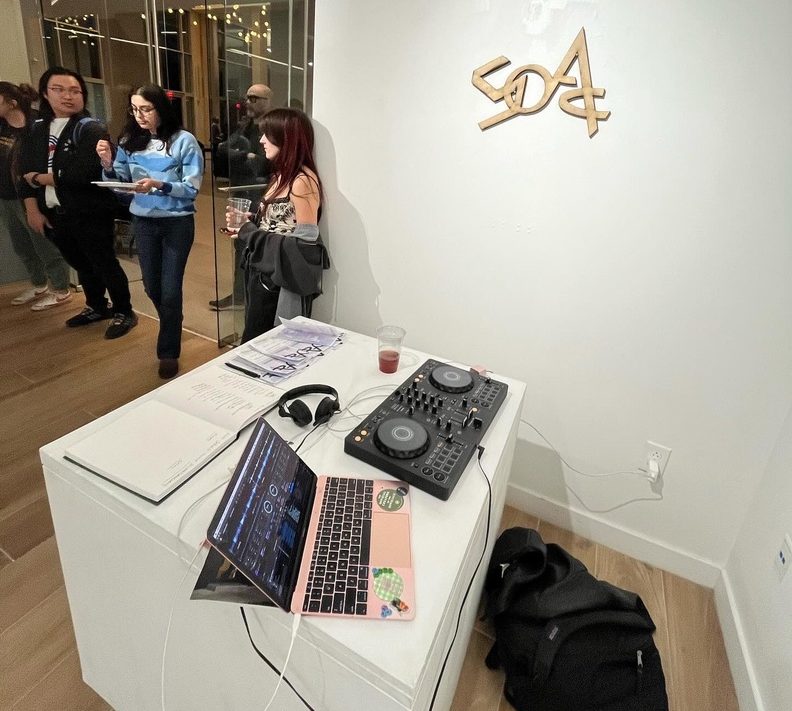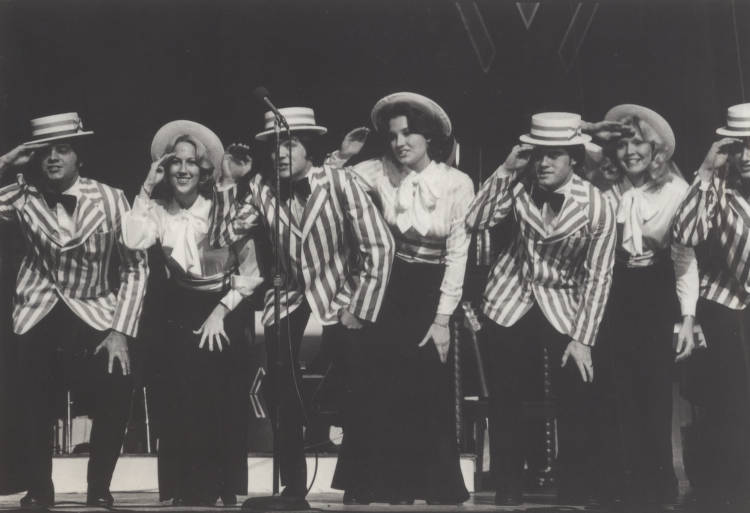While impersonating some of the most monumental artists in music, Halsey manages not to let these artists overshadow her own artistry, making The Great Impersonator their most vulnerable and experimental record yet.
It isn’t new for artists to be inspired by other artists and want to emulate their sound onto their own music. However, not many artists have done it as a concept on such a large scale like Halsey has done with The Great Impersonator. It’s a risky idea, to create an entire album defined by the sounds of some of the most renowned and recognizable artists in all of music. It carries the risk of the artist’s own identity and artistry being drowned out, instead resulting in a record that merely sounds like nothing but imitation. But Halsey escapes this defeat, mastering the art of impersonating while simultaneously staying true to her artistry that music has come to recognize.
The Great Impersonator explores the idea: “What if Halsey debuted in a different era of music?” To bring this concept to fruition, Halsey utilizes the sound and lyricism of artists she claims to have inspired her music the most. Emulating artists such as David Bowie, Britney Spears, Fiona Apple, PJ Harvey, Stevie Nicks, Bruce Springsteen, and many others, Halsey perfectly meshes their sound with her musical style.
Yet, The Great Impersonator comes at a crucial time in both Halsey’s career and personal life. The album follows up her last project If I Can’t Have Love, I Want Power, which despite being the record that performed the least commercially compared to their previous albums, it received critical acclaim and the singer’s first solo Grammy nomination. Halsey has reflected on If I Can’t Have Love, I Want Power being music that she needed to make not only personally, but also to take a risk with their creativity and who they were as an artist.
Furthermore, Halsey also opens up about her personal pain throughout The Great Impersonator. While introducing the album’s emotional lead single “The End”, Halsey revealed her private battle with lupus and leukemia beginning in 2022. In the track, she sings, “Every couple of years now, a doctor says I’m sick. Pulls out a new bag of tricks and lays it on me.” Halsey explains how she has not only navigated illness spreading through her body, but now has to explain it all to new partner, wondering if it’ll be too much and leave her. She further reflects on her physical pain on “Dog Years”, an impersonation of PJ Harvey, relating her physical exhaustion and weakness to that of a lame dog needing to be put down, screaming “196 in dog years, I have seen enough.” You can hear the exhaustion in the song’s production with the constant strums that you would expect to lead to a bigger riff, but ultimately go nowhere.
Additionally, Halsey also takes the time on tracks to reflect on other parts of her personal life. For example, while impersonating the “Badlands” version of herself, on “Hurt Feelings” Halsey discusses her relationship with her father and her desire to never be like him while using the more youthful sounds from her debut album Badlands. On the 2000s inspired track “Lucky,” with an impersonation of Britney Spears and a sample of a Britney song by the same title, she navigates the complex life of being a famous pop star, being called “lucky” and adored by strangers while simultaneously feeling empty behind closed doors. Halsey uses a bubbly and light production to contradict with the pains and darkness of fame.
In “Life of the Spider (Draft),” an impersonation of Tori Amos, she utilizes the rawness and sharp chords of a piano to emphasize her despair and suffering as she details her insecurities and the feeling disregarded, misused, and a burden in everyone’s lives. Halsey calls this song her most personal. On “Lonely is the Muse,” an impersonation of Amy Lee of the band Evanescence, Halsey utilizes the rage in vocal and instrumentation of hard rock to scream at the top of her lungs her desire to stop being reduced to being a man’s muse, making it loudly heard, sonically and lyrically, that she is her own artist and that should be recognized. And on the stripped-down and sentimental track “I Believe in Magic,” an impersonation of Linda Ronstadt, she details her journey with motherhood and watching her son grow up and finally understanding what her mother experienced.
In my opinion, there are 5 tracks that define what The Great Impersonator is supposed to be. Those are “Letter to God (1974),” “Letter to God (1983),” “Letter to God (1998),” the opening track “Only Living Girl in LA,” and finally the album’s closing and title track “The Great Impersonator.”
The tracks named “Letter to God” detail the shift in Halsey’s attitude towards the sickness she suffers from. “Letter to God (1974),” an impersonation of Cher, recounts Halsey as a child and the innocence she held towards illness. She recounts a boy in school who had leukemia, the same illness she would go on to have, and how his parents gave him whatever he wanted and no longer fought, so she prayed to God “I wanna be sick… I wanna be loved… I don’t wanna be somebody they wanna get rid of.” However, in the country-style track “Letter to God (1983),” an impersonation of Bruce Springsteen, she uses the country style of lyrical storytelling to detail growing older and moving away, but becoming sick. She pleads to God “I don’t wanna be sick, and I don’t wanna hurt, so get it over with quick… I wanna be loved. Don’t wanna be somebody that you’re tryna get rid of.” In this track Halsey lives with the regret of her prayer as illness has now taken her happiness away and pleads for the pain to be over. Finally, in the final installment “Letter to God (1998),” an impersonation of Aaliyah, Halsey issues a final emotional plea to God “You’ve gotta be sick. Why do You make it hurt, and why’s it over so quick?” In this track all she asks God is to show her mercy not only for herself, but for the sake of her son and because she “Finally found somebody [she] don’t wanna get rid of.”
And when it comes to the album opener and closer “Only Living Girl in LA” and “The Great Impersonator” these two tracks reflect Halsey as a person. In “Only Living Girl in LA” she impersonates herself through the character of Marilyn Monroe, relating herself to Marilyn as she too has lost who she was as a person through the character she puts on. She feels as over the course of her career as she has portrayed the character Halsey, people have forgotten who she was and won’t care when that “real-life girl” is gone and only the character remains. Because she, like Marilyn, will never be remembered for being Ashley Frangipane, but instead as the characters she chooses to become. Lastly, the title track “The Great Impersonator,” which is an impersonation of Bjork, perfectly closes the album by recognizing her attempts to reinvent and disguise herself from who she actually is. The song is riddled in self awareness as she recognizes that she has put herself in a position where nobody recognizes her but only the great impersonation she has put on.
Despite the title of the album, The Great Impersonator is not a facade that Halsey puts on but ironically true, authentic and vulnerable. This is a beautifully executed record where Halsey doesn’t let the artist’s she impersonates define what the album is, but instead uses them as tools to further express what she has to say through a new creative lens. When listening to the tracks, you can clearly hear the impersonation of the specific artist through the production and well-crafted lyricism, but it never feels like she’s mimicking and specifically trying to sound like said artist. The Great Impersonator sounds fresh and original, especially in an era of music where sounds are repetitive and overused.
The Great Impersonator is not only Halsey’s best body of work, but it is also one of the best albums of 2024. I fear that this album may be one that is\ only fully appreciated with time, however, no doubt, it will be appreciated and recognized as an album that was not only pivotal to Halsey’s career but music in general.





















